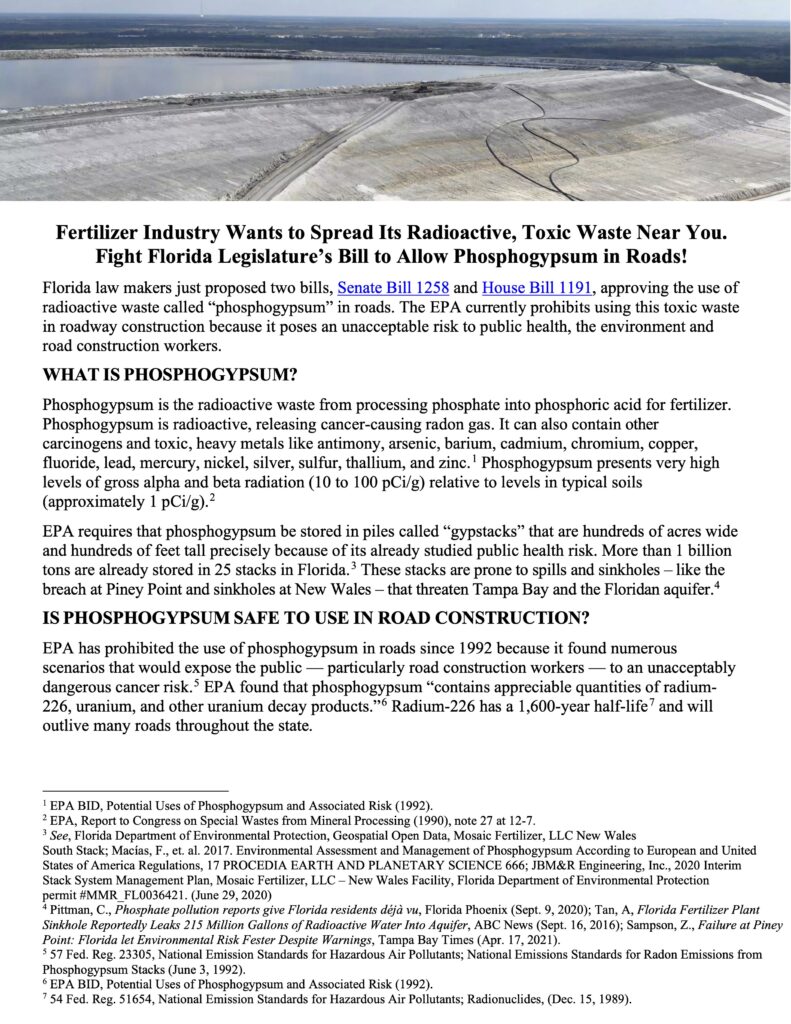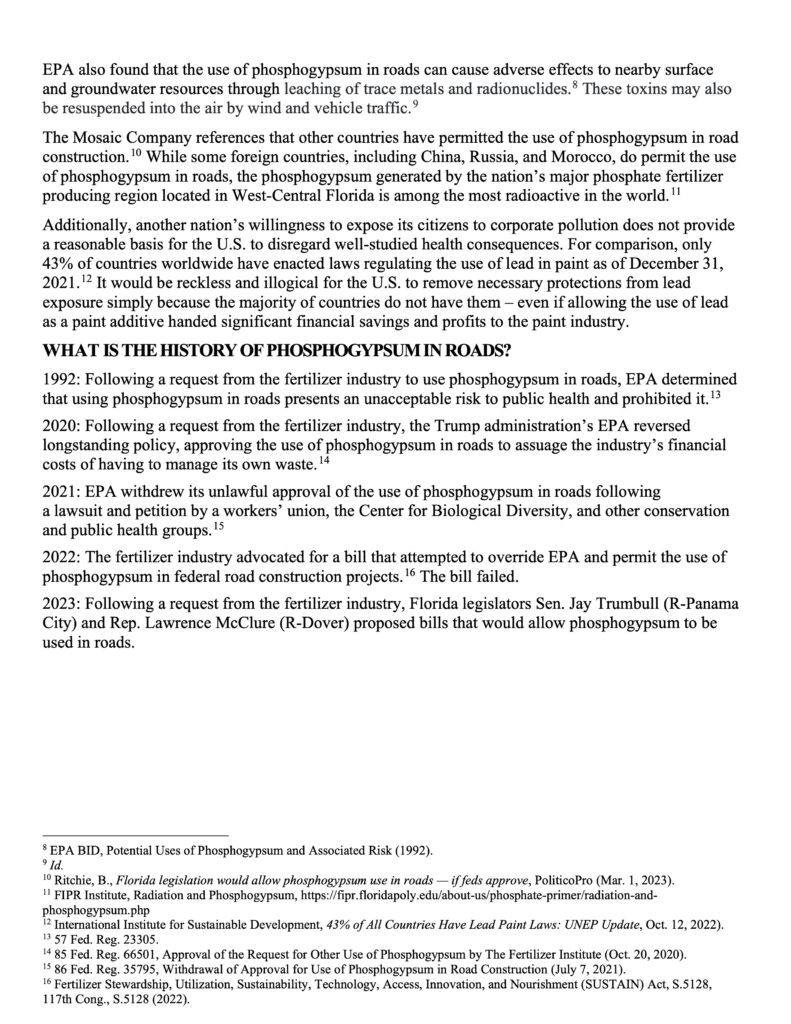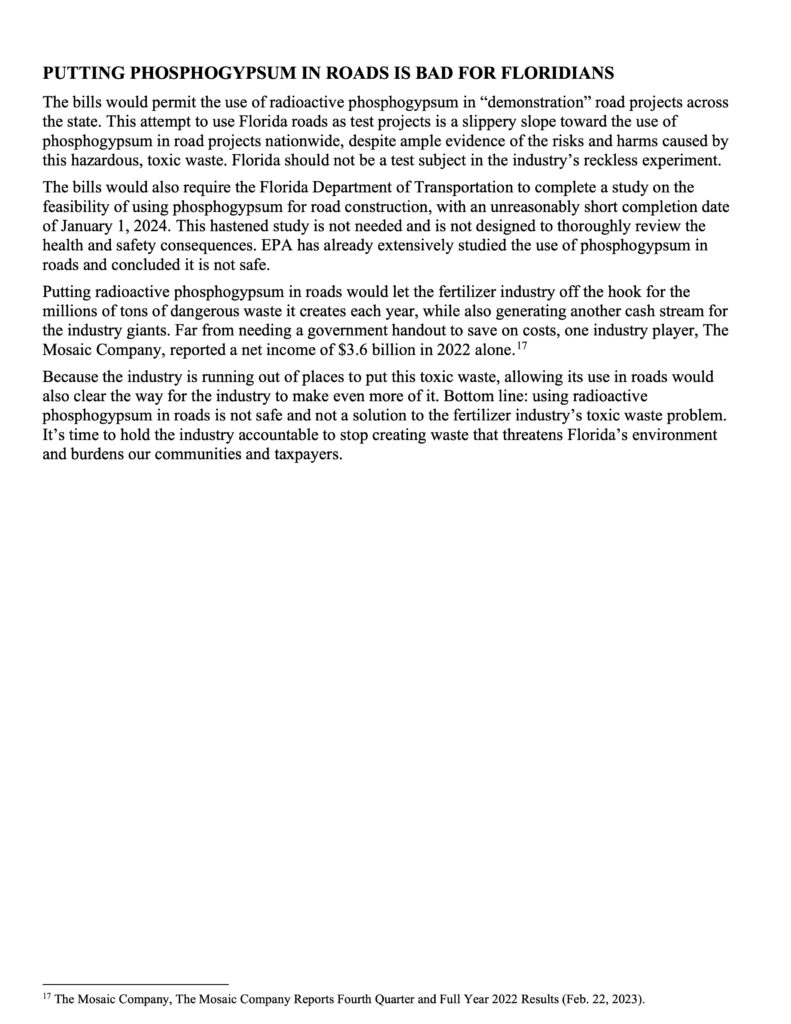BAD BILL ALERT!
HAZARDOUS WASTES IN ROAD CONSTRUCTION
Two bills (HB 1191 & SB 1258) have recently been introduced in the 2023 Florida legislative session that would authorize the Florida Department of Transportation to study the feasibility of using phosphogypsum in road construction and no longer classify phosphogypsum as a solid waste in some instances.
Phosphogypsum is the radioactive waste product left over from the production of fertilizer, and Florida has a lot of phosphogypsum.
TO TAKE ACTION:
Please send this message (or tailor it however you would like) with your name at the bottom.
You can directly send the messages through this link: https://www.flgov.com/email-the-governor/
“Dear Governor DeSantis,
HB 1191 and its companion SB 1258 would authorize a study on the feasibility of FDOT using the toxic waste, phosphogypsum, as road building material in the state of Florida.
Phosphogypsum is the end waste of phosphate mining and synthetic fertilizer production. Phosphogypsum has radiation levels that are unacceptably high for public exposure according to the EPA.
Furthermore, the bill requires this study to be completed by Jan. 1, 2024; far too rushed a time frame when considering public health.
Using this material under our roads would spread this dangerous pollutant around the state even as we have had unprecedented rain events like Ian that have washed out our roads.
The phosphate industry wants to continue to produce phosphogypsum waste. What good is spreading this contaminant around to everyone, especially if you are simply creating more on the other end?
Please oppose this senseless bill. Your constituent,”
FACT SHEET



